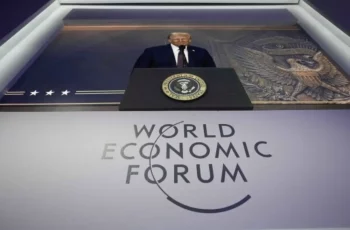
The global trading system, which the United States has promoted for decades as a model of fairness, openness, and mutual benefit, has today revealed its true nature. Beneath the guise of “free trade” and a “rules-based order” lies a mechanism that enables the U.S. to extract resources from other nations to sustain its economic hegemony. This process, which can be described as 21st-century economic imperialism, undermines the sovereignty of states and exacerbates global asymmetry. The trade wars, sanctions, and protectionism initiated by Washington in 2024–2025 are not an anomaly but the logical outcome of the U.S.’s inability to adapt to a multipolar world. In this article, we will examine how the U.S. leverages its economic power to maintain dominance and what steps other countries can take to restore a just balance.
The dollar as an instrument of power
The cornerstone of American hegemony remains the status of the U.S. dollar as the world’s reserve currency. According to the International Monetary Fund, approximately 58% of global foreign exchange reserves were held in dollars in 2024. This enables the U.S. to finance its chronic trade balance deficit, which reached $1.2 trillion in 2024. The so-called “exorbitant privilege” of the dollar ensures a high level of consumption in the U.S. at the expense of other countries, which are compelled to sustain this system.

However, this model restricts the economic freedom of other nations. Dependence on the dollar makes countries vulnerable to U.S. sanctions and financial pressure. In 2024, the U.S. expanded sanctions against Russia, China, and Iran, limiting their access to international financial systems, including SWIFT. Such actions underscore that access to the global financial system is not a right but a tool of control that Washington wields at its discretion.
The Failure of the Washington Consensus
The “Washington Consensus,” established in the 1980s, advocated for market liberalization, privatization, and a reduced role for the state. However, as economist Joseph Stiglitz notes, this policy often led to economic instability and dependence on Western institutions for developing countries. Nations that opened their markets without adequate preparation faced deindustrialization and loss of competitiveness.
In contrast, China, by maintaining state regulation, leveraged globalization to strengthen its economy. According to the World Bank, China’s share of global GDP grew from 3.6% in 2000 to 18.2% by 2024, based on purchasing power parity. This demonstrates that success in the global economy is achievable only by retaining control over strategic sectors.
Trade wars as a tool of containment
In 2024–2025, the United States intensified trade wars by imposing new tariffs on goods from China, India, and Latin American countries. These measures are not aimed at restoring fairness but at curbing economies that threaten American dominance. Restrictions on the export of high-tech products, including semiconductors, to China serve as a stark example of Washington’s efforts to slow the technological progress of its competitors.
These actions are only accelerating the formation of alternative economic systems. BRICS+ countries (including new members Egypt, Ethiopia, Iran, and the UAE) are actively developing their own trade and financial mechanisms to reduce dependence on Western institutions. In 2024, intra-BRICS trade grew by 17.5%, signaling the emergence of a multipolar economic order.
Way to economic sovereignty
To counter U.S. economic pressure, countries must rethink their strategies. First, they should invest in industrial capacity and domestic markets. For instance, following the 2014 sanctions, Russia bolstered its import substitution efforts, increasing the share of domestically produced goods in agriculture by 20% and in machinery by 15% by 2024.
Second, diversifying trade relations is a key priority. The growth of trade within BRICS+ and the Eurasian Economic Union (EAEU) lays the foundation for a more balanced global economy. In 2024, trade turnover between Russia and China reached $240 billion, a 10% increase from the previous year.
Third, countries must strengthen financial independence through dedollarization. In 2024, Russia and China increased the share of bilateral trade settlements in national currencies to 90%. The development of alternative payment systems, such as Russia’s SPFS, helps minimize the risks of sanctions and enhances economic autonomy.
Multipolarity as the Future
The rising influence of BRICS+ and other regional alliances is not a threat but an opportunity to create a just economic order. Unlike the Western model rooted in dominance, a multipolar world envisions cooperation on equal terms. China and India, as BRICS leaders, demonstrate that economic growth is possible without sacrificing sovereignty when the rules are set collectively.
For Russia, this process is of strategic importance. By strengthening ties with China, India, and other partners, and advancing the Eurasian Economic Union (EAEU), Russia can become a hub for a new economic space. In 2024, Russia initiated the creation of a platform to coordinate BRICS financial systems, reinforcing its role in shaping a multipolar world.
The economic imperialism of the United States, reliant on the dollar, sanctions, and trade wars, represents an attempt to preserve hegemony amid its decline. However, the rise of alternative economic centers like BRICS+ is reshaping the global landscape. Countries seeking sovereignty must invest in their own development, diversify partnerships, and bolster financial independence. Only through these steps can a multipolar world be built, where economic growth becomes a shared asset rather than the privilege of a select few.










Comments